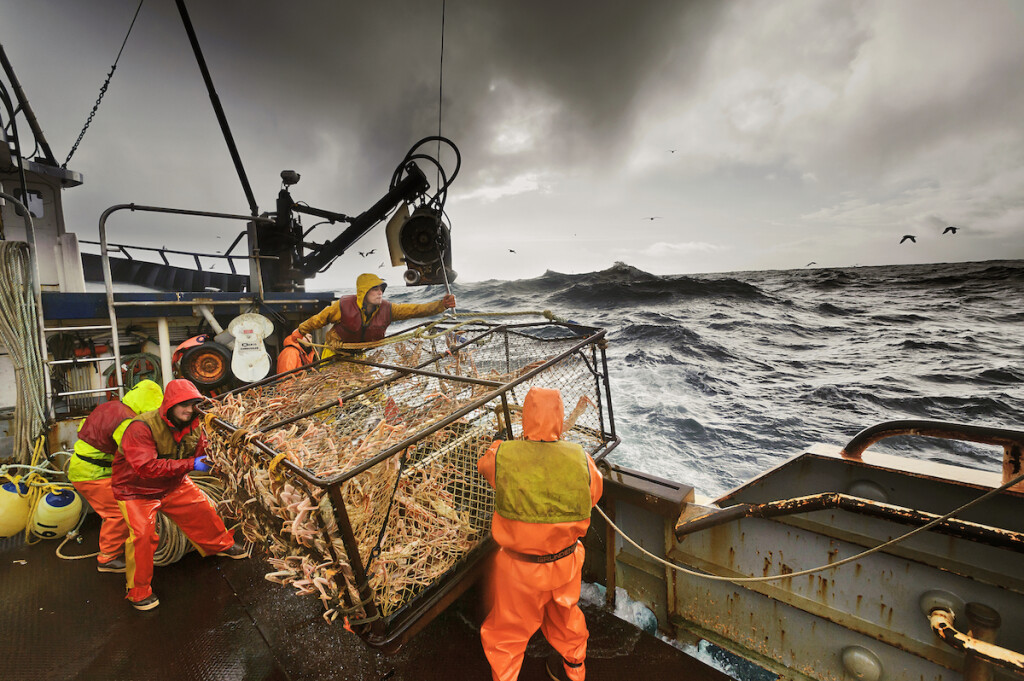The Alaska Department of Fish and Game announced on Friday, Sept. 3, that the Bristol Bay red king crab fishery would be closed for the 2021-22 season, for the first time in 25 years. The announcement came in advance of the management decision-making process, providing the crab fleet time to make any possible adjustments.
“While this isn’t the news we wanted to hear, we appreciate knowing as soon as possible for our business planning purposes,” said Jamie Goen, executive director of the trade group Alaska Bering Sea Crabbers. “It helps us to know now so we can notify our crews, plan where our vessels are going to go next, plan shipyard time between seasons, and batten down the hatches on our finances.”
The announcement on Friday also reported on data that shows all major Bering Sea crab stocks are down, and the majority of the Bering Sea opilio crab stock seems to have moved or disappeared.
“We had hoped the Bristol Bay red king crab stocks would have rebounded by now, after several years of reduced and conservative harvest levels, but that is simply not the case," said Gabriel Prout, a third-generation fisherman on the F/V Silver Spray. “Coupling this closure with the fact that snow crab harvest levels could be reduced as well, even after positive levels of recruitment in previous years, has the makings for a very frustrating and trying time for crab fishermen and the industry as a whole.”
Catch limits for Bering Sea opilio and bairdi crab fisheries will continue through the usual federal and state decision making process, which kicks off with the North Pacific Fishery Management Council’s Crab Plan Team discussing the stock assessments during the week of Sep 13-16. After that, the council will make its decision on Oct. 6, and the state will set the TAC shortly thereafter.
“Preliminary estimates are that the closure of the Bristol Bay red king crab fishery and reduction in snow crab harvest could cost harvesters well over a $100 million,” said the Alaska Bering Sea Crabbers. “This hit affects everyone in the crab industry, roughly 70 vessels and over 400 fishermen and their families, along with the processors and fishing communities that rely on crab revenues. For most crab fishermen, crabbing is their primary source of income.”
Based on NMFS’ 2021 Eastern Bering Sea Continental Shelf Trawl Survey Results for Commercial Crab Species, abundance estimates for mature male snow crab declined 55 percent from 2019 estimates, and abundance estimates for mature bairdi crab declined slightly. While the survey results don’t translate directly to harvest levels, they follow the same trend. That means reductions are likely, according to the Alaska Bering Sea Crabbers press release on Tuesday, Sept. 7.
While scientists and managers finalize the numbers, the Bering Sea crab fleet and the fishing communities around Alaska and the Pacific Northwest are bracing for a devastating blow and are calling for new conservation efforts.
“The state of Alaska took bold action in closing the Bristol Bay red king crab fishery to help mature female crab rebound from low abundance levels. Even though the directed crab fishery targets only large males and has minimal impact on female crab, the state harvest strategy was designed to close the fishery when mature female abundance is low to reduce impacts on the stock and to allow females to rebound,” said the Bering Sea crabbers. “Closing the fishery is sustainability in action.”
The fleet has been exploring increased soak times and mesh sizes to reduce catch of undersized crab, better handling practices to reduce mortality, and collaborative research on pot gear designs to reduce crab bycatch in Pacific cod and halibut fisheries.
“With bold actions taken now, we can keep Alaska’s Bering Sea crab stocks sustainable, improve stock status, and build resilience during these uncertain times,” the group noted.
But next up is movement through the council, at federal level and from other fisheries, the group’s leaders say.
“We’ll be looking to the council and NOAA Fisheries to conserve important crab habitat and spawning grounds as highlighted by crab scientists over 10 years ago, to create meaningful incentives to reduce crab bycatch in other fishing sectors, to reduce fishing impacts on molting and mating crab, and to estimate unaccounted for bycatch from unobserved fishing mortality from bottom and pelagic trawl nets, as well as pot and longline gears,” the crabber group said. “We’ll be looking to other sectors in the fishing industry to improve their hotspot reporting alerting other fishermen on areas of crab to avoid, and to improve handling practices to reduce crab mortality by limiting the amount of time crab are on deck and by gently returning them to the water.”







